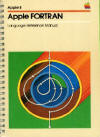 There is a debate about who designed the first high-level programming language, i.e. the first one to be compiled. FORTRAN is usually credited, Knuth and Pardo in 1977 credit Alick E. Glennie for his Autocode compiler for the Manchester I computer in 1952. Backus gives credit to Laning and Zierler at MIT who in 1953 built an algebraic translator for the MIT Whirlwind computer.
There is a debate about who designed the first high-level programming language, i.e. the first one to be compiled. FORTRAN is usually credited, Knuth and Pardo in 1977 credit Alick E. Glennie for his Autocode compiler for the Manchester I computer in 1952. Backus gives credit to Laning and Zierler at MIT who in 1953 built an algebraic translator for the MIT Whirlwind computer.
At IBM in 1954, John Backus and a group started to design the FORmula TRANslator System, or FORTRAN. Computers were slow and unreliable and all programming was done in machine or assembly code. Work was completed in 1957 and the implementation supports what is called FORTRAN I. The authors claimed that the resulting code would be as efficient as handcrafted machine code. FORTRAN included many features that were specific to the IBM 704, the first computer on which it was implemented.
FORTRAN II followed in 1958. It included separate compilation of subroutines. FORTRAN III was short-lived, and FORTRAN IV followed in 1962. This remained the standard until the ANSI FORTRAN standard was produced in 1977. The latest is FORTRAN 90, summarized in ANSI X3.198-1992. For many years, FORTRAN dominated programming, and was described as the lingua franca, or common tongue, for computer programmers.
